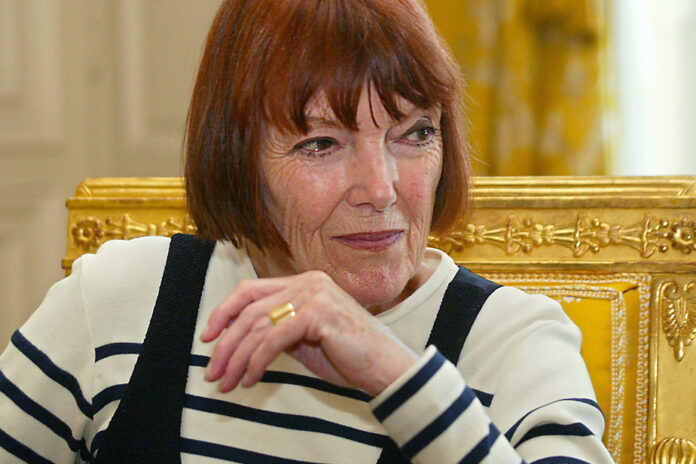(London) A figure of the “Swinging Sixties”, London designer Mary Quant, who died Thursday at the age of 93, revolutionized fashion by popularizing miniskirts, colorful makeup and patterned tights.
If her title of creator of the miniskirt has been the subject of many quarrels, in particular with the Frenchman André Courrèges, the Briton has undoubtedly participated in the international promotion of short and tight cuts.
The personality and style so recognizable by Mary Quant, with her famous brown bangs sculpted by Vidal Sassoon, helped make her one of the most famous fashion designers in the United Kingdom.
The women owe him pell-mell, the shorts (“hot-pants”), the plastic raincoats, the “paint box” make-up and the waterproof mascara.
Born on February 11, 1930 in London, she made her debut in fashion with her future husband, Alexander Plunket Greene. She was first attracted by the eccentric clothing style of the young student met on the benches of the Goldsmiths faculty of arts, in London.
In 1955, the couple opened their first shop, Bazaar, with a friend, in the booming Chelsea district. The clothing and accessories store, as well as the restaurant in the basement, became the rallying point for young people and artists. We find there Brigitte Bardot, Audrey Hepburn, the Beatles or the Rolling Stones.
Mary Quant creates dresses and short skirts, simple lines and bright colors, which she enjoys staging by composing willingly extravagant window displays.
“The gentlemen in bowler hats were banging on our shop window with their umbrellas shouting, ‘Immoral! and “Disgusting! “At the sight of our miniskirts on the pantyhose but customers flocked to buy,” she wrote in her last autobiography (2012).
King’s Road, where the store was located, becomes a parade ground for girls in miniskirts in a permanent party atmosphere characteristic of this “Swinging London” of which Carnaby Street in Soho is another hotspot.
Buoyed by her success, the designer opened a second store in London, collaborated with the American chain of department stores JC Penney and launched a line accessible to as many people as possible, The Ginger Group.
A follower of geometric shapes, polka dots, color contrasts and games of materials, such as PVC, Mary Quant promotes playful fashion without snobbery.
“My clothes happened to fit exactly with teenage fashion, with pop, espresso bars and jazz clubs,” she commented in Quant by Quant, her first autobiography published in 1965.
“She was in the right place at the right time,” Jenny Lister, fashion curator at the Victoria and Albert Museum, which has around 100 pieces of clothing, make-up, underwear, patterns – from the stylist. “She had a fearless demeanor and could grab headlines, talking provocatively about sexuality and her private life.”
Living in Surrey, where she died, she made only rare public appearances. She had a son, Orlando, three grandchildren. In 2000, she sold her cosmetics company to the Japanese, whose logo, a flower, has remained her trademark.
When asked in her 80th year, she confessed a certain nostalgia for the “effervescence and innovation” of 1960s London but found it “wonderful to be a woman today”.
“A new species of superwomen has arisen,” she rejoiced in her autobiography. “They move like athletes and sit like men, with their knees apart. Their children take their mother’s name… They’re in control.”








